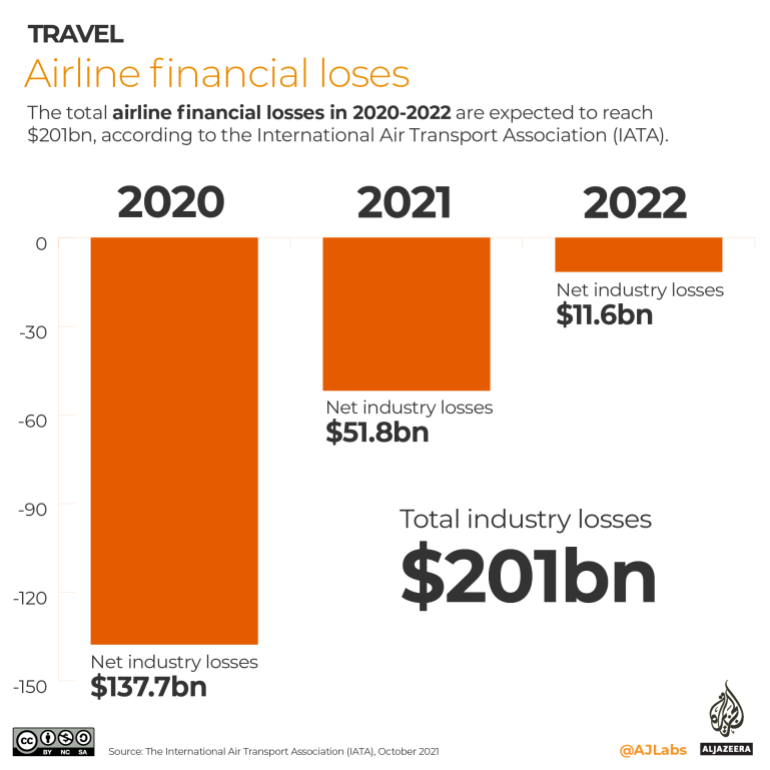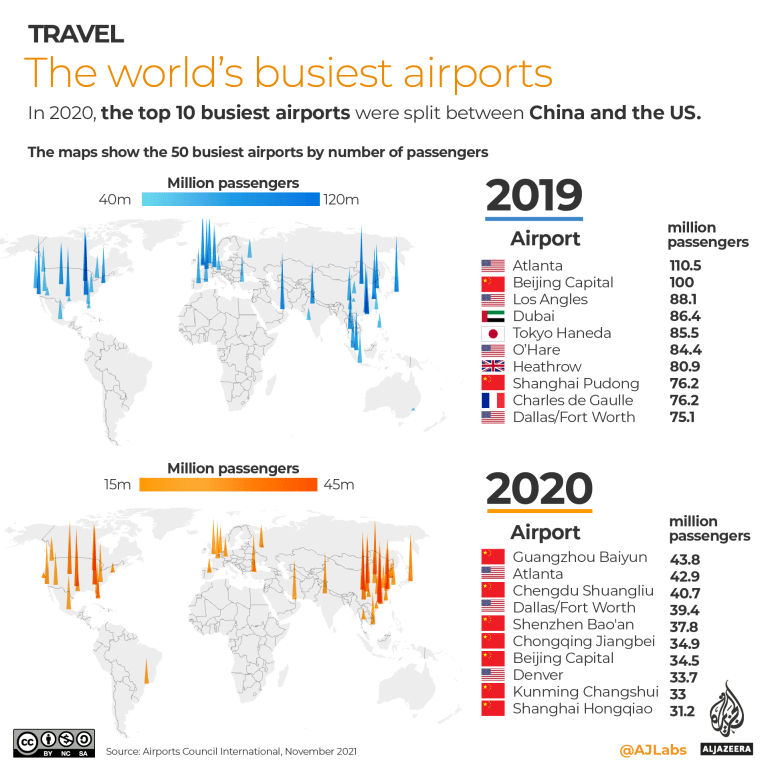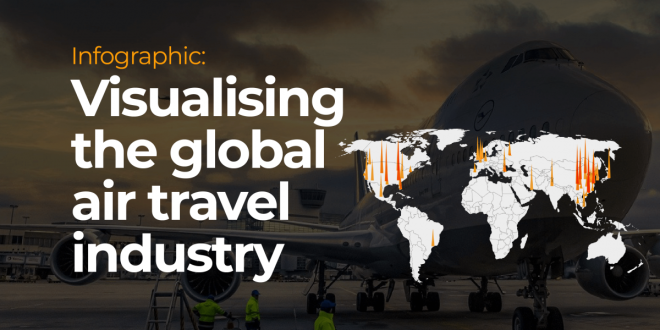As the Omicron variant of the coronavirus spreads across the globe, governments are once again tightening travel restrictions injecting fresh uncertainty into the aviation industry.
Though economies around the globe have been recovering this year, the number of international air passengers is still down by roughly half of pre-pandemic levels, according to the International Civil Aviation Organization’s (ICAO) latest report [PDF].
The five infographics below show how the global air travel industry has been affected by COVID-19.
Global travel restrictions
At least 42 countries have so far imposed travel bans following the spread of the Omicron coronavirus variant.
Nations are adopting different levels of border control. Countries such as Israel, Morocco and Japan have closed their borders entirely, while others have only tightened COVID testing at the border.
The map below shows countries that have imposed travel bans since November 26, 2021. Quarantine measures may still apply to countries with open borders.
Global air travel during the pandemic
In 2019, some 4.5 billion passengers took 42 million flights worldwide. That is an average of 115,000 commercial flights every day, according to FlightRadar24.
Then on March 11, 2020, COVID-19 was declared a global pandemic by the World Health Organization (WHO). Over the course of just one month, passenger air travel dropped by more than 75 percent, reaching a low of 23,926 flights on April 12, 2020.
With lockdowns and quarantines sweeping the globe for most of 2020, many people cancelled or postponed travel plans. By the end of the year, 2.7 billion fewer people travelled by air compared with 2019, according to the ICAO.
Though international and domestic flights picked up in 2021, the number of total air passengers still stands at about half of 2019 levels.
 (Al Jazeera)
(Al Jazeera)Financial losses
Total air travel industry losses during 2020-22 are expected to reach $201bn, according to the International Air Transport Association (IATA).
In 2020 alone, the industry lost upwards of $137bn with losses expected to reduce to $11.6bn in 2022.
 (Al Jazeera)
(Al Jazeera)The world’s busiest airports
Prior to the pandemic, the world’s busiest airports by the number of passengers were spread across North America, the Middle East, Asia and Europe. However, in 2020, the top 10 busiest airports were split between China and the United States.
Guangzhou Baiyun International Airport, located in the south Chinese province of Guangdong, was the busiest airport in 2020, with more than 43.8 million passengers travelling through the airport, according to Airports Council International (ACI).
Atlanta Airport in Georgia, US, had the second-highest number of passengers with 42.9 million people using the airport. However, this was a 61 percent decrease from 2019, when it was ranked the busiest airport in the world.
Seven of the 10 busiest airports in 2020 were situated in China.
 (Al Jazeera)
(Al Jazeera)The busiest international air routes today
Half of the 10 busiest air routes in November 2021 departed from or arrived at Dubai International Airport.
Destinations for travellers from Dubai included Riyadh with 242,446 seats, London with 226,496 seats and Jeddah with 182,794 seats.
Global seat capacity in November 2021 was 27 percent lower than the same month in 2019, with subregions such as Southeast Asia, Oceania and parts of Africa seeing the largest decline in seat capacity compared with November 2019, according to data by OAG Aviation.
 (Al Jazeera)
(Al Jazeera)
 Top Naija News – Nigeria News, Nigerian News & Top Stories Top Naija News – Nigerian Newspapers, Nigerian News. topnaijanews is a daily Nigerian newspaper covering Latest News, Breaking News, Entertainment, Sports, Lifestyle and Politics.
Top Naija News – Nigeria News, Nigerian News & Top Stories Top Naija News – Nigerian Newspapers, Nigerian News. topnaijanews is a daily Nigerian newspaper covering Latest News, Breaking News, Entertainment, Sports, Lifestyle and Politics.




